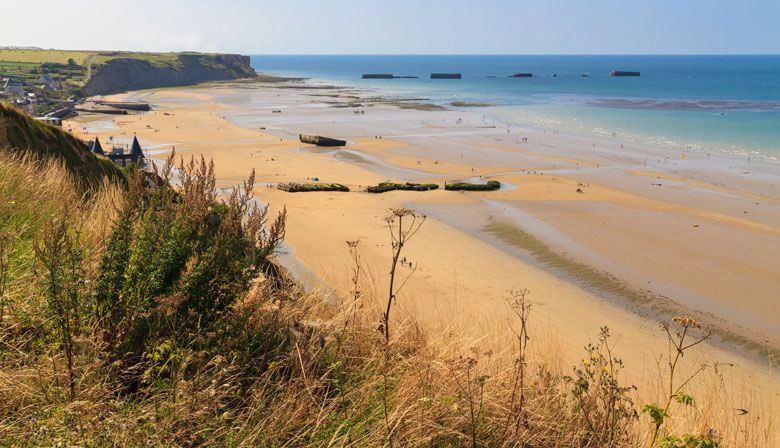A History of Normandy
When the French government surrendered before the German Army and signed the Armistice on June 22, 1940, the President of the United States, Franklin Roosevelt, considered the situation drastic, one that would create a real imbalance in the world order. Germany’s invasion of Russia in 1941 and Japan’s decision to join the Axis Powers signaled the beginning of even more conflicts. Operation Overlord was born.
Dismantling the Axis Powers
It was decided on June 25, 1942, not to land troops in Europe. Operation Torch, an amphibious military campaign, was favored in North Africa. It’s mission was to free up the Mediterranean Basin, thus eliminating any threat that weighed on the Middle East.
The primary goal in launching attacks in Europe was to topple Germany; the liberation of France was just a fortunate consequence of this decision. While the Allied forces were organizing the Normandy beach landings, they were also setting up military deception operations. A deception operation consists in creating an artificial fog of war to hide one’s real intentions from the enemy. In fact, this was how the Canadian commandos attacked Dieppe in August 1942. However, the high number of casualties revealed the capacity of the German Army to defend its coastline.
A year later, General Dwight Eisenhower was officially named Supreme Commander of the Allied Expeditionary Forces in Europe. Germany was not oblivious to the fact that landings would most likely take place; the military Chief of Staff predicted an attack in spring 1944. Adolf Hitler, the Fuhrer, intervened directly in the decisions made by the German armed forces. He was also very involved in commanding operations.

German Defense
It was, however, Commander Erwin Rommel who was at the origin of the excellent defense strategies on the western coastline. He had anti-disembarkment obstacles put into place (ones he invented), convinced that eventual landings would occur at high tide. The overarching objective of these obstacles was to create an “Atlantic Wall” (Atlantikwall) in order to rip through embarkations and immobilize foot soldiers who would try to get inland. Iron or metal stakes (also known as screw pickets or Rommel’s asparagus), tracks, and pointed tetrahedrons were just some of the objects placed on the beach. German soldiers also installed land and underwater mines. Low-level zones were purposefully inundated and the screw pickets, turned upright, were placed in them.

Organizing the Attacks
Operation Neptune was an amphibious attack that owes its success, in part, to the failed Dieppe landing in North Africa which allowed Eisenhower and his forces to learn from their mistakes. In order to succeed, the target zone was enlarged and the means increased. It was therefore decided that the attacks would take place on 5 beaches in Normandy, between Ouistreham and Varreville in the Cotentin area.
For questions of visibility and with the goal of surprising German forces, the Allied forces decided to attack during the day and at low or semi-high tide. Unless bad weather conditions pushed back the landings until June 6 or 7, D-day (jour-J in French) was scheduled for June 5, 1944.
The surprise was even greater due to false rumors that were spread and a gathering of embarkations to make the Germans believe that landings were taking place in a region other than Normandy.

The D-day landings and the Battle of Normandy
Hoc Point was bombed on the morning of June 6, 1944, followed by troops landing on the Omaha Beach and Utah Beach. These attacks were particularly deadly because German defenses were very efficient. Gold Beach, Juno Beach, and Sword Beach were also attacked. Able to head inland, Allied troops progressively liberated villages and took control over strategic places like Caen and Cherbourg Port. Several nationalities fought on the battlefield together: American, English, Canadian, and French (Commander Kieffer).
A landing took place in Provence on August 15, 1944. From there, Allied troops took control of the French territory. The parade for the liberation of Paris took place on the famous Champs Élysées on August 26, 1944.


